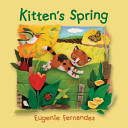
This beautifully illustrated picture book — a fantastic read-aloud — introduces toddlers to animals and the sounds they make.
Materials from Canada

This beautifully illustrated picture book — a fantastic read-aloud — introduces toddlers to animals and the sounds they make.

It’s bedtime. This little boy is ready to climb the stairs and say goodnight. But father isn’t ready at all. He’s afraid of monsters; he doesn’t want to be left alone downstairs.
This brave lad knows how to handle Father. He’ll patiently lead his parent through the bedtime routine. Naturally the boy won’t mind looking in the closet, behind the drapes and everywhere in between if it will make his anxious father feel better. The boy will cheerfully hop into bed for a bedtime story. And he’ll say, after a final hug, “I’ll hear you if you need me in the night.” Father should feel much better now. But what’s going to happen when he has to go downstairs alone?
Maybe there are monsters in the house after all. But can you guess what they are really after? A reassuring story for confident children and timid parents everywhere.
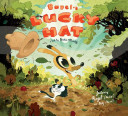
Bagel has lost his lucky hat! His friend Becky helps him retrace his steps, but the story he tells her of the day’s adventures laughing fishes? a mad scientist? a space-traveling robot? is far too silly to be believed. Or is it? Coupled with zany illustrations by underground comic book artist Dave Cooper, this whimsical tale is sure to be a favorite for any kid whose imagination sometimes runs wild.
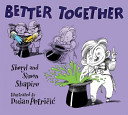
You stir and squoosh them, squish and moosh them. Mingle, blend and mix!
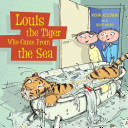
What do you do with a tiger named Louis who came from the sea?One morning, Ali and Ollie are awoken by a beastly snore. They look out the window and what do they see? Is it a giant carrot? A pumpkin? No, it’s a tiger, soaking wet and fast asleep. They decide his name must be Louis and he must have come from the sea. Ali and Ollie agree that he’s hungry, so they venture outside with milk and cereal. When Mother and Father join them, Louis wakes up with a mighty roar. Everyone scampers inside — followed by Louis, who pads in through the open door. While the family huddles upstairs, Louis sleeps by the fire and luxuriates in the bathtub. Before long, Ali and Ollie come up with an ingenious plan to help Louis return to the sea.Readers will be captivated by Sholto Walker’s humorous illustrations, which heighten the charm and originality of Michal Kozlowski’s spirited tale.
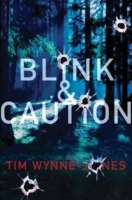
Two teenagers who are living on the streets and barely getting by become involved in a complicated criminal plot, and make an unexpected connection with each other.
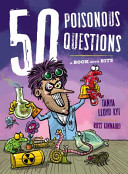
Poisonous snakes, toxic herbicides, noxious fumes — poisons in one form or another are all around us. An innocent-looking flower may be lethal, and smog can make it impossible to breathe. Poisons can be the death of us, but they can also cure disease. The second book in Annick’s 50 Questions series provides answers to many intriguing questions, such as: Should you pee on a jellyfish sting? No, douse it with vinegar! Why was the Mad Hatter mad? From working with mercury nitrate. Can venomous lizards cure diabetes? Yes, a drug used to treat the disease comes from the Gila monster’s venom. Poison Puzzles at the end of each chapter then test the readers’ knowledge. Young readers who want to avoid paint that kills or leaves that give blisters can explore the fascinating and dangerous world of poisons. And don’t be afraid! The killer cartoons and dead-funny text are venom-free.
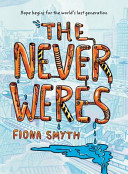
Late in the next century, the human race is on the verge of extinction. A mysterious virus has resulted in no births in almost a generation. Despite the impending doom, three urban teenagers try to live their lives with hope. Mia strives to preserve humanity’s compassion through her art and her volunteer work with Mrs. C and the other “oldies.” Tech-savvy Xian spends her time tinkering with the robots she’s sure will inherit the Earth. Jesse, the son of geneticists, is convinced the future lies with cloning, but society is reeling from the grotesque failures of previous attempts. When the friends stumble upon the 60-year-old mystery of a missing girl, it leads them back to Mrs. C, who, it turns out, is the world’s only successful clone — and the key to saving our species.
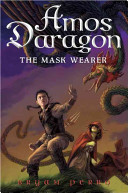
Amos Daragon’s life changes forever the day a mermaid gives him a mask capable of harnessing the strength of the wind—and appoints Amos as the new Mask Wearer. His task: to find the masks for the other elements, earth, fire, and water. Only then will Amos be fully empowered to battle the evil forces that threaten to destroy the balance of nature and plunge the world into darkness.To fulfill his destiny, Amos must make his way to the mysterious woods of Tarkasis. But a wicked sorcerer is terrorizing the land, searching for a skull pendant that was stolen from him—a pendant that conceals a secret weapon. What will Amos do when the pendant falls into his hands? Will Beorf, a boy who can morph into a bear, and Medusa, a snake-haired gorgon, turn out to be friend or foe? And will Amos master any of his newfound skills as Mask Wearer in time to face a formidable enemy? His challenges are great . . . and they’re just beginning.
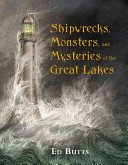
In 1679, a French ship called the Griffon left Green Bay on Lake Michigan, bound for Niagara with a cargo of furs. Neither the Griffon or the five-man crew was ever seen again. Though the Griffon’s fate remains a mystery, its disappearance was probably the result of the first shipwreck on a Great Lake. Since then, more than six thousand vessels, large and small, have met tragic ends on the Great Lakes. For many years, saltwater mariners scoffed at the freshwater sailors of the Great Lakes, “puddles” compared to the vast oceans. But those who actually worked on the Great Lakes ships knew differently. Shoals and reefs, uncharted rocks, and sandbars could snare a ship or rip open a hull. Unpredictable winds could capsize a vessel at any moment. A ship caught in a storm had much less room to maneuver than did one at sea. The wreckage of ships and the bones of the people who sail them litter the bottoms of the five lakes: Ontario, Erie, Huron, Michigan, and Superior. Ed Butts has gathered stories and lake lore in this fascinating, frightening volume. For anyone living on the shores of the Great Lakes, these tales will inspire a new interest and respect for their storied past.